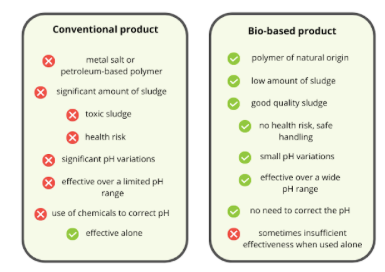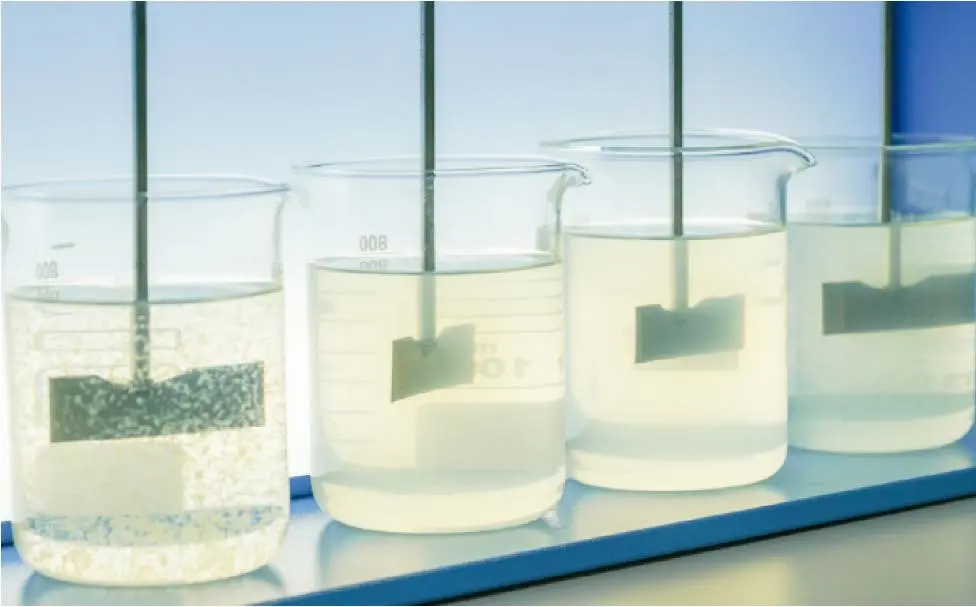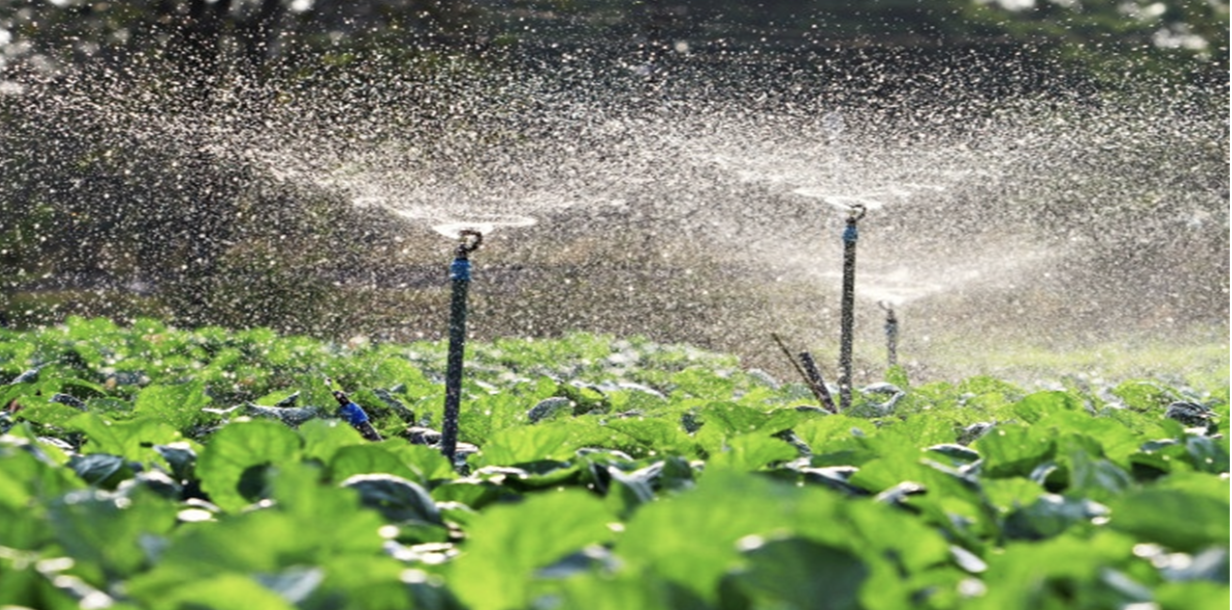Introduction
Coagulation flocculation is a critical step in water treatment that allows the elimination of the colloidal fraction.
This key step requires specific chemicals: coagulants and flocculants. However, the products traditionally used have environmental and health inconveniences. Bio-based flocculant coagulants, from natural sources, appear to be a more ecological and safer alternative.
Coagulation-flocculation principle
Coagulation and flocculation are two distinct but complementary processes.
Colloids are small, stable charged particles in suspension. Coagulation is the process of disrupting this balance of suspension, by the addition of a coagulant, whose role is to neutralize the charges in order to allow the particles to agglomerate.
The agglomerates thus formed will then aggregate until they form flocs of sufficient size to facilitate their sedimentation or flotation: this is flocculation. This process can be improved by adding flocculants, which are substances that facilitate the aggregation of particles.
In some cases, a single product can perform both actions: destabilizing and then aggregating the particles.

The advantages of bio-based flocculant coagulants
Inorganic coagulants, based on metal salts, have the advantage of being inexpensive. However, choosing them implies constraints and risks. The addition of synthetic organic polymers improves the efficiency of coagulation flocculation. Their use is not very restrictive, but these products are often petroleum-based and can present a health risk whenever monomers are released.
Bio-based flocculant coagulants offer several advantages over conventional coagulants.
- Sludge reduction
The use of bio-based products reduces the amount of sludge, which reduces the costs and environmental impacts associated with their management.
Traditional coagulants produce metal hydroxide slurries in large quantities. This sludge is toxic and therefore classified as hazardous waste, which makes it difficult to dispose. Bio-based solutions not only allow for reduced sludge production, but sludge is also of better composition and can therefore be more easily recycled.
- Reduced risk
The use of inorganic coagulants involves the release of residual metal salts into the treated water, which raises health concerns (in the case of aluminum salts) and can damage the treatment infrastructure (in the case of iron salts).
The use of bio-based coagulants does not generate residual salts, which reduces the risk of toxicity for the receiving environments and improves the quality of the sludge.
In addition, bio-based coagulants are less toxic, so those in charge of handling them benefit from safer working conditions.
- Low impact on water pH
Bio-based coagulants do not significantly impact the pH of the water, which is beneficial for downstream treatment processes and water quality.
The use of metal salts requires a permanent adjustment of the pH, so that it corresponds to the precipitation zone of the metal hydroxides. Indeed, the hydrolysis of metal salts leads to a decrease in pH, which must be compensated by the addition of base. On the contrary, bio-based coagulants have a more neutral action, which makes it possible to limit the use of chemicals for pH correction.
In practice: bio-based flocculant coagulants
Bio-based coagulants and flocculants are generally based on biopolymers, such as cellulose, starch, chitosan, etc. These polymers are very abundant on earth: they are naturally present in plant and animal compounds, from which they can be extracted.
However, these natural polymers have few cationic groups and are of low molecular weight, which can lead to insufficient destabilization of the colloidal suspension, or too slow sedimentation of the flocs formed. Thus, a chemical modification of the polymers is possible to increase their efficiency.
In some cases, the combined use of these biopolymers and traditional coagulants has reduced the amount of metal salts used while improving the quality of the treatment.

Conclusion
The use of bio-based coagulants therefore reduces the environmental impact of water treatment. In fact, they are not only produced from renewable raw materials, but they also make it possible to obtain better quality sludge, in smaller quantities, and to reduce the consumption of chemicals to maintain the pH. They do not raise any health concerns.
Bio-based flocculant coagulants are a sustainable and effective alternative to traditional chemical coagulants. Their use reduces the carbon footprint of water treatment, without compromising on the quality of the treated water. OSEIDO supports you in the implementation of water treatment solutions that minimize the environmental impact.
Want to know more? Happy to help you, please contact with us contact@oseido.tech
Sources :
Omar Bouaouine. Characterization and valorization of plant bioresources for the pretreatment of effluents by coagulation-flocculation. Earth Sciences. University of Limoges; Sidi Mohamed ben Abdellah University (Fez, Morocco), 2018. French. NNT: 2018LIMO0088. Tel-02320657v2
Julie Salvé. Development of chitosan-montmorillonite hybrid materials for coagulation-flocculation of natural waters: from the study of the structure-reactivity relationship in model waters to the application to the treatment of river water [Online]. Thesis Organic, Mineral, Industrial Chemistry. Poitiers: University of Poitiers, 2020. Available on the Internet http://theses.univ-poitiers.fr
Engineer’s techniques: Water treatment before use. Particulate matter (Pierre MOUCHET – 2000)

